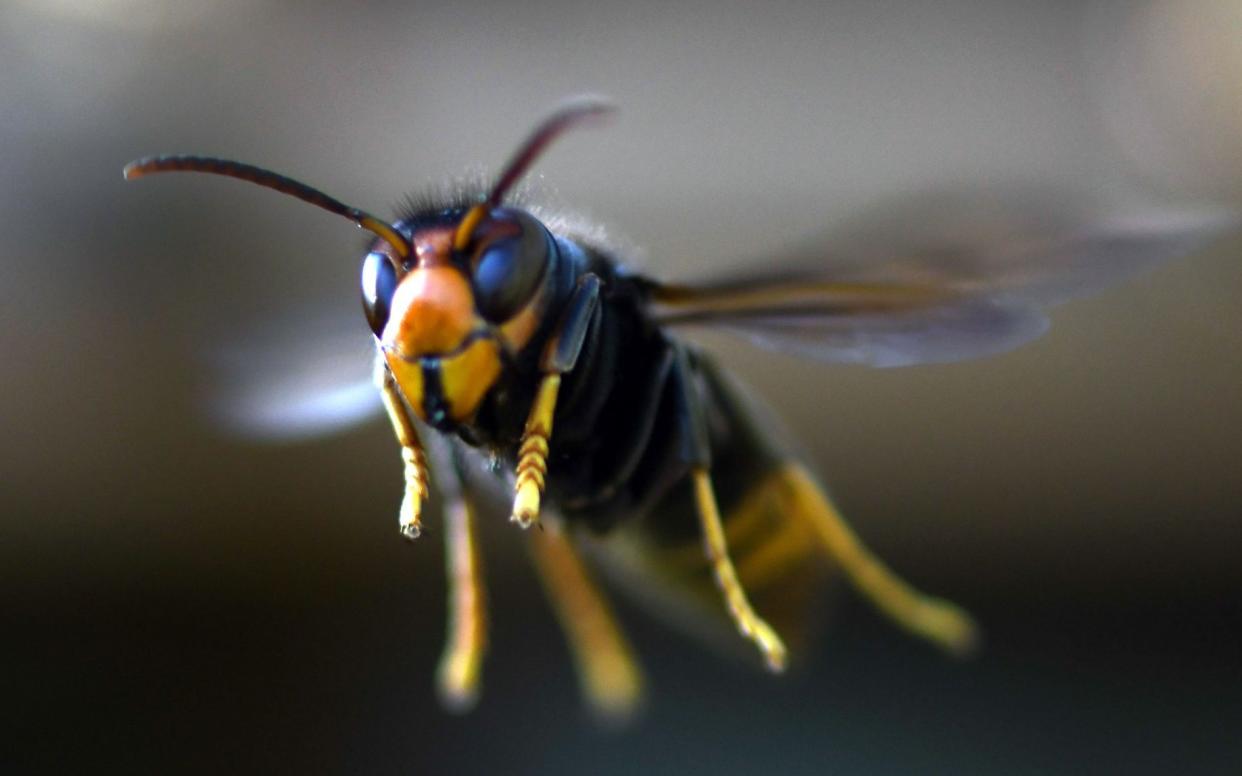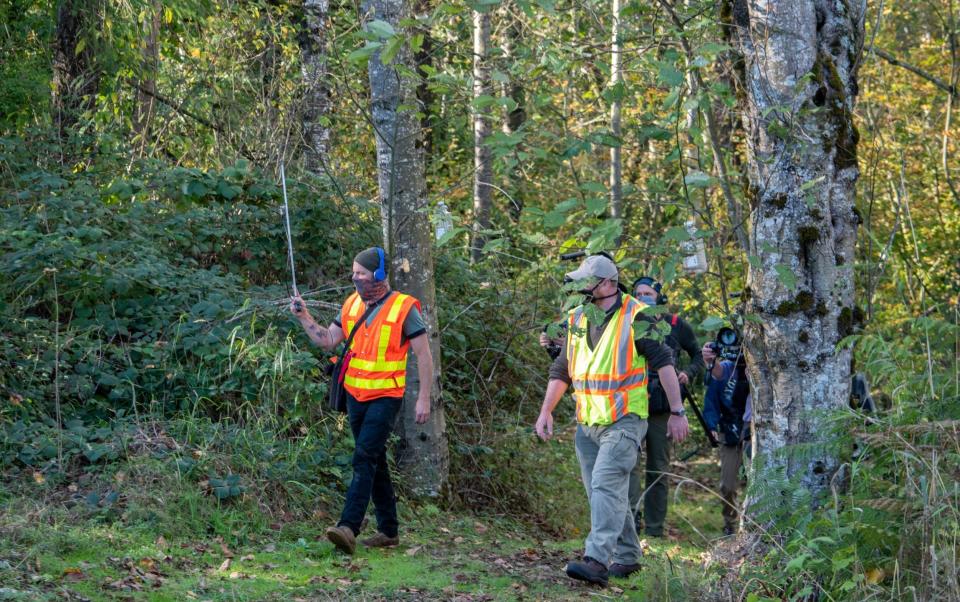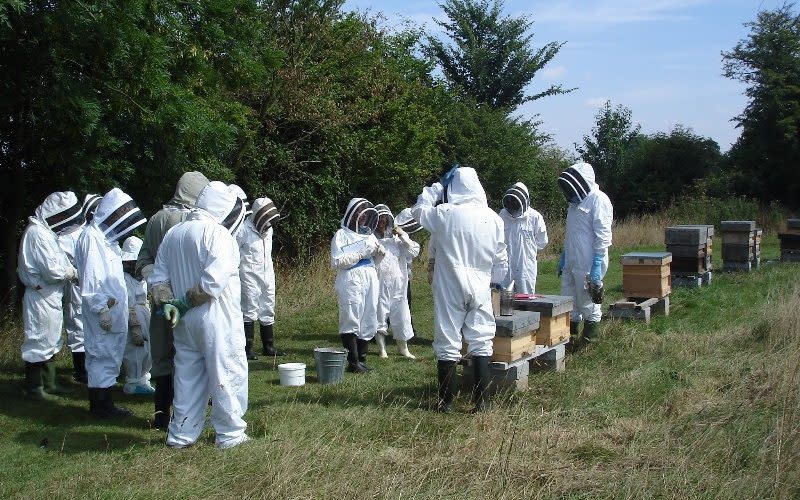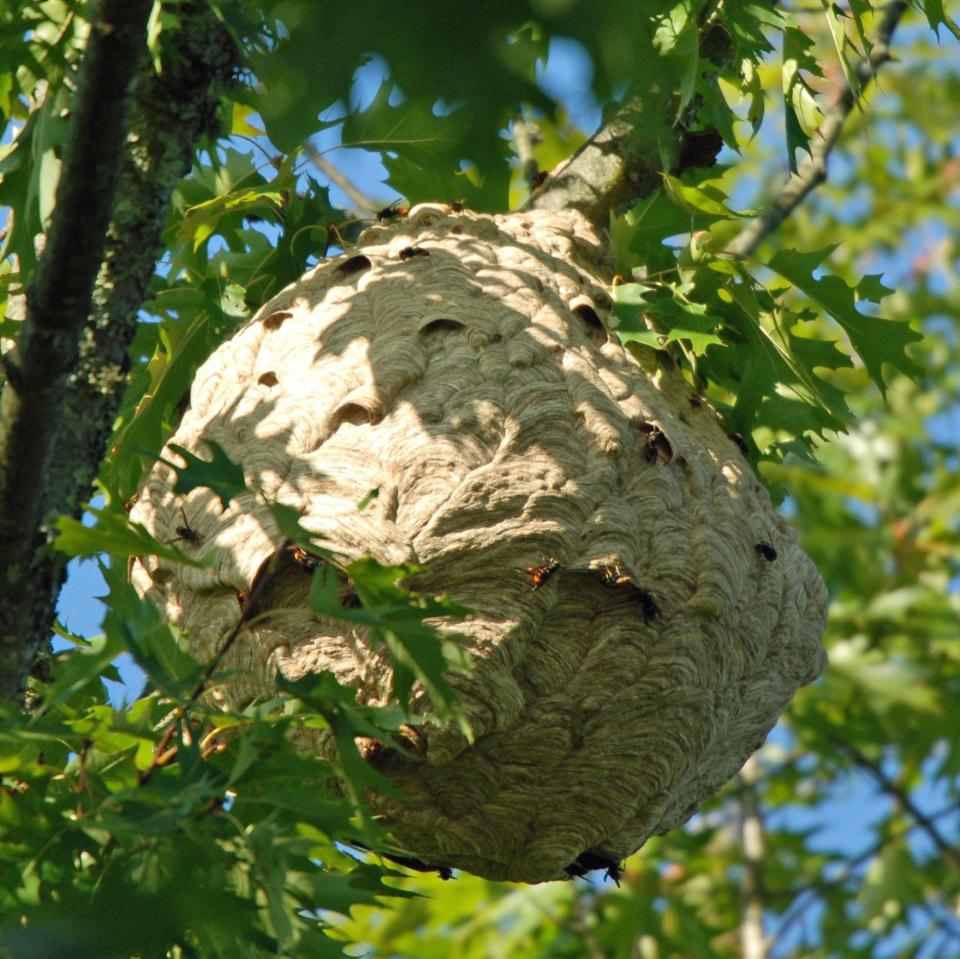How scientists are tracking down the Asian hornets invading Britain

A stone’s throw from the White Cliffs of Dover, a specialist team of operatives struck out in search of invaders. The only way to follow their trail on this overgrown site on the Kentish coast last year was to chop a path across the terrain with hedge trimmers. Watching one’s footing was crucial: at any point, vegetation could conceal a deep drop beneath.
The team’s mission was important – and potentially dangerous. It wasn’t about stopping the boats. It was about stopping a group of stowaways that sometimes arrives by ferry, sometimes hides in lorries or cars – and sometimes simply flies across the English Channel on a strong southerly wind.
The Asian hornet is a non-native species; an adaptable apex predator capable of killing humans if they attack in great enough numbers (which usually they don’t). They’re a threat to native species, as well as to rural economies. The insects can damage the crops of fruit farmers and vineyard owners.
This week, the Government urged the public to keep watch for the distinctive hornets (Vespa velutina) after last summer marked a record year for sightings of the invasive species. A total of 72 Asian hornet nests were found and destroyed in the UK in 2023, with the majority located in Kent. Before this, only one or two nests a year had been discovered here.
At more than three centimetres long, they dwarf our wasps and honey bees, though they’re smaller than our native hornet and pose no greater risk to human health than either these or native wasps. But experts fear they could become established in Britain if temperatures are warm enough for them to survive in the country during winter.
“By ensuring we are alerted to possible sightings as early as possible, the public can help us take swift and effective action to stamp out the threat posed by Asian hornets,” said Nicola Spence, Defra’s chief plant and bee health officer.
Dr Peter Kennedy, a behavioural ecologist at the University of Exeter, accompanied one such effort to stamp out the threat when he joined the National Bee Unit’s (NBU) hunt for a nest on the Kent coast last year.
“It took half a day to cut a path through to go in the [right] direction,” he says. “And the hornet isn’t waiting [when you do get through].”
The nest was eventually located that day, after repeated observations and much “hacking away.”
The search near the White Cliffs was aided by a new method of Asian hornet tracking using electronic radio tags, which Kennedy and his team are pioneering. The hornet is lured by bait and then captured when it comes to feed. It is put in a tube and buried in ice for eight to 10 minutes, to chill it without killing it.

“In essence you put her to sleep so you can tie the radio tag around her waist in such a manner that she can’t reach the thread to chew through it,” says Kennedy.
When the hornet is then released, directional information on where it has flown is transmitted to a radio receiver, and eventually the unwitting insect leads the search team to the area where the nest is.
“The final bit is still down to a person spotting the nest,” says Kennedy. “If it’s high in a tree, then [they’ll look] through binoculars, in the canopy. It can take 15 to 30 minutes just searching in the leaf canopy trying to spot it. At that point you can call in whoever is responsible for destroying it.”
This is typically done by delivering insecticide into the nest via an extendable pipe.
The radio tagging system is relatively expensive and still in its infancy. More often, members of the 60-strong NBU (part of the Government’s Animal and Plant Health Agency) will use a more old-fashioned track and trace approach to locate the nests. After a sighting is correctly reported, a team is dispatched to the site and the hornets are lured to a bait, caught and marked with colours.

“We time them and get a compass bearing on which way they’re heading and how long they take,” says Peter Davies, the NBU field delivery manager with responsibility for managing the Asian hornet incursion. “From that we can work out how far away the nest is and in what direction, then do triangulation to pinpoint the nest.”
Does he anticipate finding even more nests this year than last? “How long is a piece of string? Jersey had a record year last year, with 450 nests. This year they’re about half what they were in previous years. But that doesn’t necessarily translate to the mainland. We’ll see.”
The weather will play a part in determining how big a problem Asian hornets pose in Britain this year.
“A lot of it is, ‘has it been a nice dry warm spring’, or ‘has it been raining and cold through March and April’?” says Davies.
The story of how Asian hornets arrived in Europe starts in France in 2004. The insect was first confirmed in Lot-et-Garonne in the South West of the country. It’s believed to have arrived in an imported consignment of pottery from China. Before long it became established, spreading to many other regions of France and altering the biodiversity in some.
“France sadly didn’t recognise the scale of the issue for a couple of years so was a bit slow off the mark,” says Ian Campbell, a spokesman for the British Beekeepers Association. “They estimate there are about 500,000 nests in France. In some areas they’re talking about a density of 10 to 15 nests per square kilometre. That’s what we’re slightly concerned about.”
Spence seems to share this concern. “It would be nice if France was doing a bit more,” she says.
But France isn’t the only country with a problem. The Asian hornet is now established in Spain, Belgium, the Netherlands, Portugal, Italy, Switzerland and Germany. It wasn’t sighted in Britain until 2016, when a nest was found and destroyed near Tetbury in Gloucestershire, following 10 days of intensive searching.
The authorities had been waiting for this moment. As a result, their response was little short of emergency-grade. A three-mile surveillance zone around Tetbury was set up and a local control centre opened.
Eight years on, there is still no firm evidence the Asian hornet has become established in Britain. But it may be a matter of time.
“There’s a concern the number could grow, and if we look at evidence from other countries, we can see this can happen rapidly,” warns Campbell. “In northern Spain, it went from a handful to more than 10,000 nests in about four years.”
Once a non-native species is established, it is very hard to get rid of, he says.
“There’s a real question as to whether they can take hold,” says Charles Tyler, a professor of environmental biology at the University of Exeter. “They might do in the future, because of the warming climate. The queens can’t currently survive in winter because it’s too cold. So we’re talking about a potential future issue or problem for the UK.”

Defra has a highly detailed 36-page contingency plan to tackle any outbreaks. “We’re currently in the eradication phase,” says Campbell.
Traps have been set at locations across Kent, East Sussex, Devon and North Yorkshire.
If it all sounds rather extreme, the consequences of failing to eradicate the insect would be severe. They pose a risk to honeybees and insect pollinators, and more than 11kg of insects a year can be “taken down” by each nest, according to Campbell. “It does have an impact on biodiversity.”
Prof Tyler, who has been studying what they feed off, says they eat up to 1,300 species. “The focus on honeybees has been a bit myopic,” he suggests.
As for the danger to humans, the public is cautioned to avoid approaching or disturbing a nest. Any suspected sighting should be reported via the Asian Hornet Watch app, says Defra.
“An individual hornet isn’t that aggressive or dangerous, but I wouldn’t advise anyone to go and cuddle it,” says Campbell. “They defend their nest. And that’s when people get hurt.”
Additional reporting by Emma Gatten

